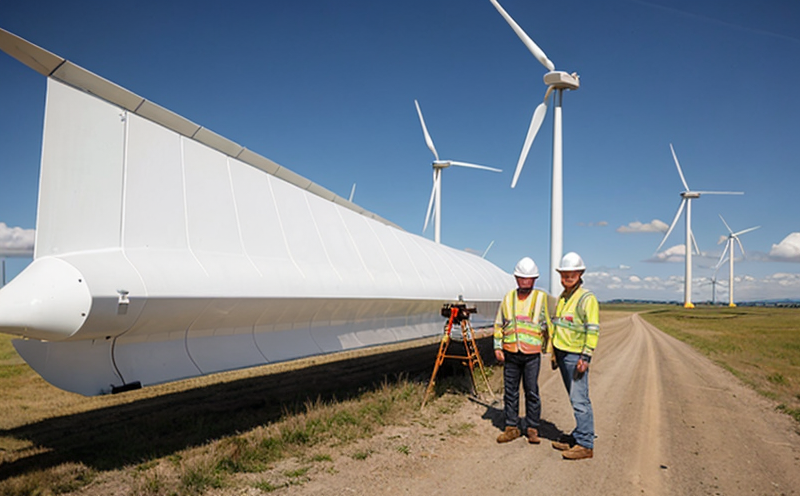Wind turbine blade inspection
The integrity of wind turbine blades is paramount to the operational efficiency and safety of a wind farm. The lifespan of these components can span decades, but external factors such as environmental conditions, mechanical stress, and fatigue can significantly impact their durability. Routine inspections are essential for ensuring that any defects or signs of wear are identified early, preventing catastrophic failure.
Our wind turbine blade inspection service leverages advanced non-destructive testing (NDT) techniques to ensure the structural integrity of these critical components. This process is not only crucial for compliance with international standards but also plays a significant role in reducing maintenance costs and extending the operational life of turbines.
The primary focus of our inspections includes:
- Visual examination
- Magnetic particle inspection (MPI)
- Dye-penetrant inspection (DPI)
- Ultrasonic testing
- Eddy current testing
We use a combination of these methods to identify surface and subsurface defects, including cracks, delaminations, and other anomalies that can compromise the blade’s structural integrity.
The inspection process involves meticulous preparation. Blades are cleaned thoroughly before any NDT procedure to ensure accurate detection. Our team utilizes specialized equipment calibrated according to ISO standards to guarantee precision and reliability in our findings.
Our service extends beyond just the inspection itself. We provide detailed reports that include a comprehensive analysis of the findings, recommendations for repair or replacement, and strategies for preventing further degradation. This holistic approach ensures that decision-makers have all the necessary information to take proactive measures.
Scope and Methodology
| Inspection Type | Description | Standards |
|---|---|---|
| Magnetic Particle Inspection (MPI) | Used to detect surface and near-surface flaws in ferromagnetic materials. | ASTM E709, ISO 17635 |
| Dye-Penetrant Inspection (DPI) | Used to detect surface-breaking defects in a wide variety of materials. | ASME Section V, EN 4179:2016 |
| Ultrasonic Testing (UT) | Uses high-frequency sound waves to inspect for internal flaws and thickness variations. | ISO 5834, ASTM E1029 |
| Eddy Current Testing (ECT) | Used for the detection of surface and near-surface flaws in conductive materials. | ASTM E709, ISO 8528 |
The methodology we employ is based on a thorough understanding of wind turbine blade design and the environmental factors that can affect their performance. Our team works closely with clients to tailor the inspection process to meet specific needs, ensuring that no aspect of blade integrity goes unchecked.
International Acceptance and Recognition
- The International Electrotechnical Commission (IEC) has recognized the importance of wind turbine blade inspections, recommending these as part of a comprehensive maintenance program.
- The American Society for Testing and Materials (ASTM) provides standards that are widely accepted in the industry for NDT practices.
- The European Committee for Standardization (CEN) has developed harmonized standards that ensure compatibility across different countries within Europe.
- Our service aligns with ISO 17635 and ASTM E1029, ensuring that our inspections are recognized globally.
The acceptance of wind turbine blade inspection services is crucial for compliance with international regulations. Our clients benefit from a standardized approach that ensures their operations meet the highest industry standards.
Competitive Advantage and Market Impact
In an increasingly competitive market, the ability to provide reliable and accurate wind turbine blade inspections is a significant advantage. By offering comprehensive inspection services that adhere to international standards, we help our clients stay ahead of regulatory requirements and operational challenges.
Our service not only ensures compliance but also enhances safety and reduces downtime, which can significantly impact the overall cost-effectiveness of operations. In addition, by providing detailed reports and recommendations for maintenance or replacement, we contribute to the long-term sustainability of wind farms.
The demand for reliable inspection services is growing as the renewable energy sector continues to expand. Our expertise in this field positions us as leaders in ensuring that wind turbines remain operational and safe, contributing positively to the global push towards sustainable energy solutions.





